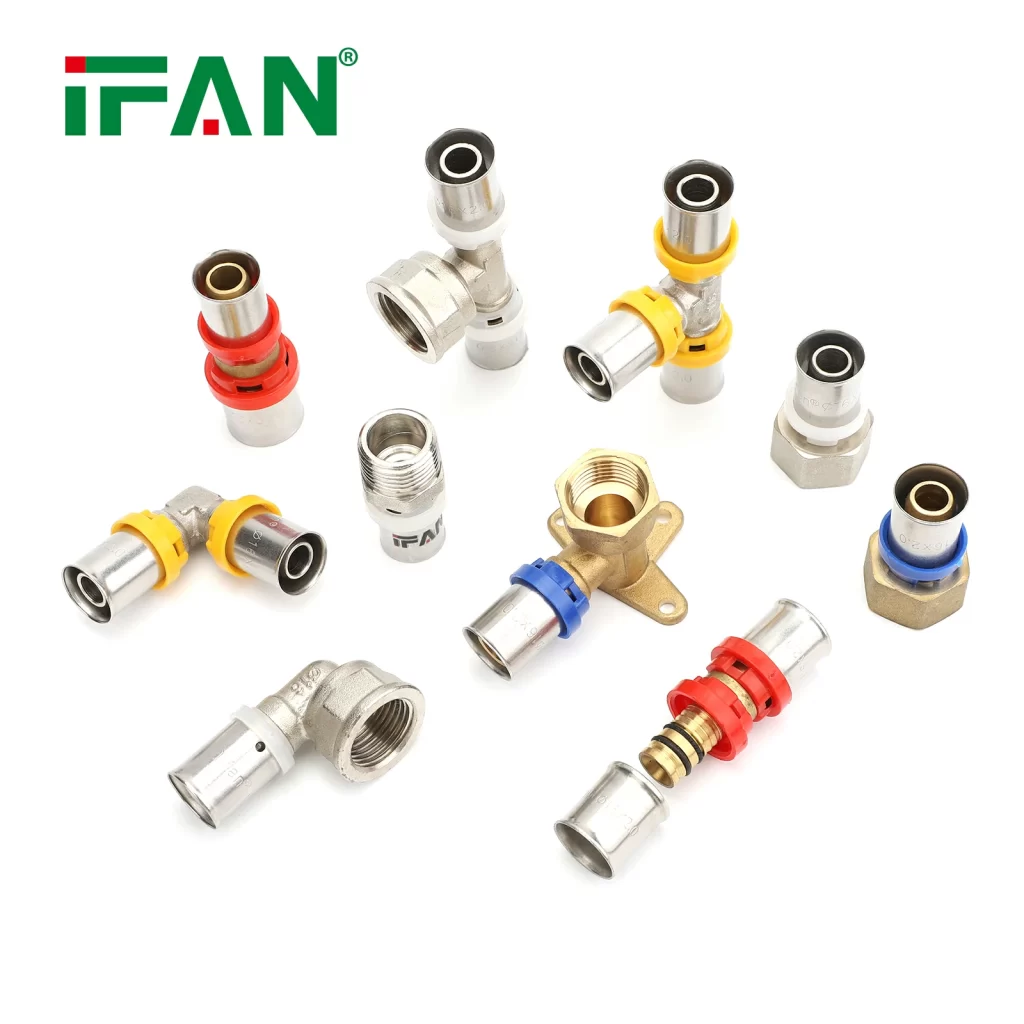Introduction
Gone are the days of messy soldering for copper pipe connections. Modern press tool technology has revolutionized plumbing, offering a cleaner, faster alternative that’s just as reliable as traditional methods. While these tools excel with copper, they’re equally transformative for PEX press fittings, creating durable connections in seconds without flames or solder.
This guide will explore:
- How press tools work for both copper and PEX systems
- The advantages over traditional soldering
- Professional tips for perfect press connections
- Why plumbers are switching to this method
The Press Tool Revolution
How Press Connections Work
- Cut pipe cleanly with a tubing cutter
- Deburr edges for smooth insertion
- Slide on specially-designed fitting
- Press with calibrated jaws to create permanent seal
Key Benefits Over Soldering
| Feature | Press System | Soldering |
|---|---|---|
| Install Speed | 10 seconds | 2+ minutes |
| Skill Required | Minimal | Years of practice |
| Fire Risk | None | Significant |
| Cleanliness | No flux/residue | Messy cleanup |
| Reliability | 50+ year lifespan | 30-50 years |
Press Tools for PEX vs Copper

While the same tool often works for both materials, there are key differences:
Copper Press Fittings
- Brass or copper bodies
- Require specific press rings
- Wider temperature tolerance
PEX Press Fittings
- Plastic or composite bodies
- Often include built-in seals
- More flexible installation
Pro Tip: Many tools like the Milwaukee M12 Press Tool handle both materials with interchangeable jaws.
Top 3 Press Tools for DIYers
- Ridgid RP 340 Press Tool
- Battery-powered convenience
- Works with copper and PEX
- 200+ presses per charge
- Viega SanPress Hand Press
- Manual operation
- No batteries needed
- Perfect for tight spaces
- SharkBite Press Tool
- Affordable entry point
- Simple one-handed operation
- Great for small repairs
Installation Best Practices
For Copper Pipe
- Clean pipe ends with emery cloth
- Verify full insertion (listen for “click”)
- Position press tool at 90° angle
- Complete full press cycle
For PEX Press Fittings
- Use go/no-go gauge after pressing
- Support pipe runs every 32″
- Allow for thermal expansion
- Pressure test before concealing
Cost Comparison
While press fittings cost 20-30% more than solder fittings:
- Labor savings of 50-70% offset cost
- No torch/gas expenses
- Reduced insurance costs (no hot work permits)
- Fewer callbacks from failed joints
Professional Insights
“After switching to press tools, we complete jobs 40% faster with zero leak callbacks,” says Mark Jennings, master plumber with 25 years experience. “The PEX press fittings are particularly game-changing for retrofit work where soldering isn’t practical.”
Conclusion
Press tools have transformed plumbing by:
- Eliminating fire hazards
- Reducing installation time
- Making pro results achievable for DIYers
- Working seamlessly with both copper and PEX
Whether you’re a professional looking to boost productivity or a homeowner tackling a weekend project, modern press systems deliver solder-quality connections without the mess or skill requirements.
FAQs About Press Tools and PEX Fittings
1. Can I use the same press tool for copper and PEX?
Yes, many tools like the Milwaukee M12 work with both when you change jaws, but always verify compatibility.
2. Are press connections as strong as soldered joints?
Independent tests show press fittings often exceed solder joint strength, especially with PEX systems.
3. What’s the largest pipe size I can press?
Most residential tools handle up to 1″, while commercial models go to 2″ or larger.
4. Do press fittings meet plumbing code?
All major press systems are approved by UPC, IPC, and national codes when installed properly.
5. How do I know if my press was successful?
Quality tools provide audible/visual confirmation, and you should always perform a pressure test.





